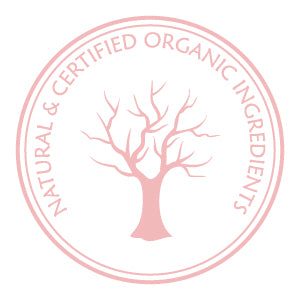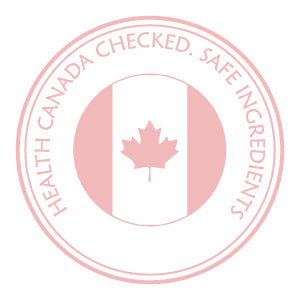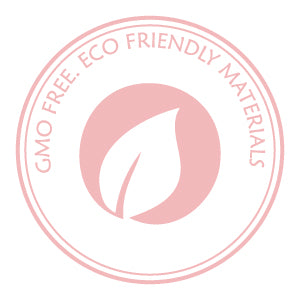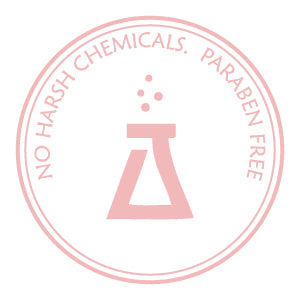Article: Your Natural Face Moisturizer, Friend or Foe?
Your Natural Face Moisturizer, Friend or Foe?
You have finally found the moisturizer of your dreams!
It is all natural and the ingredients are simply a dream come true. You have combed through the ingredients and officially determined that your cream is made of wholesome goodness.
Well, is it really the case? Is your natural face moisturizer as good as it looks?
 Your natural moisturizer, is it a friend or foe?
Your natural moisturizer, is it a friend or foe?
Regardless of how good it may seem, a face cream is much more than the sum of its ingredients. The way these ingredients are bound together controls what type of product it is and what it does to your skin.
How Does A Moisturizer Work?
To effectively address skin dryness, moisture content in a moisturizer needs to be immediately absorbed and sealed by a thin layer of oil.
Skin is considered dry when the moisture content in it is less than ten percent. Stratum Corneum, the outer layer of skin is a protective structure organized in a brick and mortar fashion made of dead skin cells and intercellular lipids such as cholesterol, fatty acids, and ceramides.
This important layer acts as a defensive barrier that protects skin from loss of moisture, or Trans Epidermal Water Loss (TEWL).
 Skin Moisturizing and Epidermis
Skin Moisturizing and Epidermis
An effective face cream should reduce and prevent Trans Epidermal Water Loss, restore the natural lipid barrier, thus helping skin mimic its’ natural water retention ability.
Face moisturizers can achieve this in two ways and each way has its' pros and cons.
Types of Moisturizers and when to use them
Natural face cream is formulated by forming an emulsion. An emulsion is a bond between types of liquids that naturally do not mix. In this case, it is water and oil.
Emulsions are made with the help of a substance called an emulsifier. Emulsifiers used in natural skin care making are mostly waxy substances that bind oil and water keeping the formula from separating back into its original components.
The ingredients in face creams can be bound in two different ways and how these ingredients are bound is of utmost importance and determines how the cream reacts with your skin.
1. Water-In-Oil type of emulsifiers incorporate water droplets into oil.
Results: Heavy Cream, High Oil Content, Wax Heavy, Occlusive.
Traditionally face creams were mostly made with water-in-oil emulsifiers such as beeswax or, less often, lecithin. They were extensively used in the early days of cream making as it was one of the few emulsifiers available.
Cream made with this type of emulsifier does not absorb well. It creates a formulation that is oil heavy and often occlusive. Skin hydration is achieved by forming an impermeable barrier on skin thus preventing moisture from evaporating.
The moisture in the product is not absorbed into skin well as it is surrounded by an oily layer, which prevents its access to the skin.
These formulations are most suited for creams with skin protective properties such as sunscreens or types of ointments that need to stay on skin for longer periods of time without being washed off.
2. Oil-In-Water type of emulsifier incorporates oil droplets into water.
Results: Light Moisturizers, High Water Content, Effective Hydration, Fast Absorbing, Water Soluble, Non Occlusive.
This type of cream is more suited for light moisturizers such as day or night creams as it allows for water content to absorb into skin and be sealed by a thin layer of oil.
It is fast absorbing and immediately adds water content to skin and is usually non-occlusive. It makes a water soluble product that can be easily rinsed off and might need to be reapplied more often.
Natural oil-in-water emulsifiers are much more common now and are readily available to the formulator but are more difficult to work with.
These emulsions require precise formulation to make a stable product as they can easily separate because of their high water content. Additionally, they need careful preservation as the product contains more water.
What Should A Natural Face Moisturizer Contain?
The best of the ingredients may not be enough if the formulation is not properly implemented but any effective natural face moisturizer MUST contain the following 4 components.
1. Water
Is water the first ingredient on the list? That is a good start!
A face cream that is intended to moisturize skin needs to have a high moisture content. Skin needs water to stay moisturized and the water in the product should be available to be easily absorbed.
Think you shouldn’t be paying for water? An emulsion with high water content is more difficult to formulate and is more labour intensive, which makes it a more costly product than a similar size bottle of pure oil.
AVOID: Floral waters, distillates, plant extracts or juices.
They look like healthier water substitutes but, in reality, any plant-based additives add nutrition to creams and require extra preservatives to ensure safety from microbial contamination.
They are great in other types of skin care products such as serums but in a face moisturizer, distilled water is really your best option.
2. OilOils are a must in a facial cream. Even if you have oily skin, you will benefit from proper skin cleansing to remove excess sebum and dirt and applying a small amount of light moisturizer.
AVOID: Heavy fats such as Shea and Cocoa butter or lanolin in face care products as they may contribute to acne, hydrogenated oils such as Squalane (hydrogenated form of Squalene, a natural substance in skin oil, or sebum) and opt in for light, nutritious plant oils instead.
3. EmulsifierEmulsifiers are necessary to combine all the ingredients together. Natural moisturizers often contain a combination of emulsifiers in order for the cream to remain stable.
AVOID: Beeswax is a frequently used emulsifier but unless you are looking for a sunscreen, it’s best to avoid it. It is occlusive, makes a heavy and oily formula, and prevents moisture in the cream to be absorbed into skin.
An ingredient called emulsifying wax is used extensively in “natural” products for its ease of formulation but contains synthetic ingredients.
4. Preservative
Where there's water, there’s life!
Any natural skin care product that contains water requires a preservative. A natural face cream is a perfect Petri dish, an ideal environment for the pathogens to grow. It is nutritious and moist.
Beware of ineffective preservatives in natural skin care such as grapefruit seed or other citrus extracts. They simply do not work. They may also contain hidden ingredients.
Sometimes a face cream ingredient list has no preservatives at all! It is a great marketing stunt, however, there are only two possibilities:
- The product contains preservatives but they are not listed, which makes this product illegal. That raises a valid question of what else might be in the cream. In that case, the product is not what it claims to be.
- The product indeed does not contain any preservatives. In this case, your face cream is not suited for consumption as it harbours bacteria and is not safe.
That is rare as most unpreserved skin care products will have visible signs of spoilage. However, it is also possible for the cream to have high bacteria count even if it smells and looks fine.
How To Check The Ingredients In Your Facial Moisturizer?
Always check what is in your cream yourself by consulting a reputable and objective source. You can check what each ingredients does and its safety in all your skin care products by following the link provided below.
 What is in your face moisturizer?
What is in your face moisturizer?
Hope this article helps you make an informed decision next time you are looking for a natural moisturizer and avoid the loopholes in formulation that are intended to make a product attractive and marketable but not necessarily make it a quality product.
RESOURCES:
To check ingredients https://cosmeticsinfo.org/
https://www.thoughtco.com/definition-of-emulsion-605086
https://www.nature.com/articles/s41598-017-15921-5







